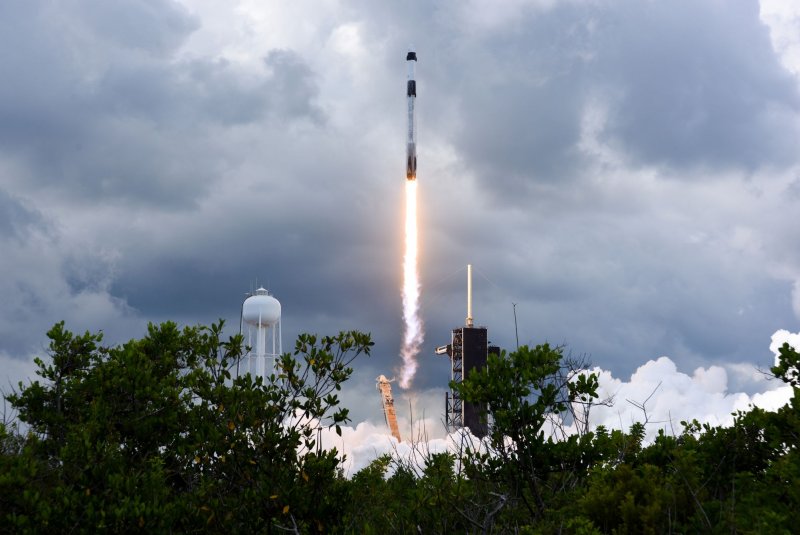In a remarkable demonstration of technological prowess and international collaboration, SpaceX successfully launched NASA’s Crew-11 mission to the International Space Station (ISS). The mission, part of NASA’s Commercial Crew Program, carried four astronauts aboard a SpaceX Crew Dragon spacecraft, marking another milestone in the continued partnership between public and private spaceflight initiatives. The launch not only strengthens America’s presence in space but also underscores the expanding role of commercial enterprises in shaping the future of space exploration.
The Crew-11 launch took place at the historic Launch Complex 39A at NASA’s Kennedy Space Center in Florida. This launch site, once used for Apollo and Space Shuttle missions, has become a centerpiece of SpaceX’s operations. With the Falcon 9 rocket standing tall on the pad and anticipation building across the globe, the mission lifted off smoothly and on schedule, lighting up the Florida sky and symbolizing humanity’s ceaseless pursuit of exploration beyond Earth.
The Crew-11 team consists of four astronauts: a NASA commander and pilot, along with mission specialists from the European Space Agency (ESA) and the Japanese Aerospace Exploration Agency (JAXA). This international composition reflects the collaborative nature of the ISS project, which has, since its inception, relied on partnerships between nations to achieve its ambitious goals. These astronauts will spend approximately six months aboard the ISS, engaging in a wide array of scientific experiments, technology demonstrations, and maintenance activities.
One of the most critical aspects of the mission is the science planned during the crew’s stay. Experiments will focus on microgravity’s effects on the human body, new methods of space agriculture, and the behavior of materials in space environments. These research endeavors are essential, not just for maintaining human health in space, but also for supporting future long-duration missions to the Moon and Mars. The work done by Crew-11 will build upon the decades of data gathered aboard the ISS, pushing the boundaries of what is known and possible in human spaceflight.
The Crew Dragon spacecraft used for this mission has been upgraded and tested extensively. It features enhanced life-support systems, touch-screen controls, and autonomous docking capabilities. The capsule is fully reusable, aligning with SpaceX’s broader goal of reducing the cost of access to space. After reaching low-Earth orbit, the Crew Dragon performed a series of maneuvers to safely dock with the ISS. The docking process was automated but closely monitored by both ground control and the crew on board, ensuring precision and safety throughout.
The successful arrival of Crew-11 at the ISS marks the continuation of a rhythm that SpaceX and NASA have finely tuned over the years. Since the historic Crew Dragon Demo-2 mission in 2020, which was the first time a commercial spacecraft ferried astronauts to the ISS, each successive mission has grown in complexity and importance. Crew-11 represents a culmination of lessons learned, challenges overcome, and systems refined through real-world application.
The Falcon 9 rocket, SpaceX’s workhorse launcher, once again played a central role. Its first stage booster, recovered and reused from a previous mission, landed flawlessly on a drone ship stationed in the Atlantic Ocean. This routine but extraordinary feat has become emblematic of SpaceX’s philosophy: to make spaceflight sustainable and cost-effective through innovation. The reusability of both the Falcon 9 and the Crew Dragon capsule is instrumental in enabling NASA to launch more frequent missions at a reduced cost.
Beyond the technical achievements, the Crew-11 mission is a testament to human cooperation. In an age marked by geopolitical tensions, space exploration remains a unique domain where collaboration thrives. The presence of astronauts from the U.S., Europe, and Japan aboard a commercial American spacecraft headed to an international orbiting laboratory is a powerful reminder of what humanity can accomplish when it works together.
While the mission’s immediate focus is on scientific discovery and maintaining ISS operations, its broader implications are significant. The technologies tested, the data gathered, and the experience gained will inform future missions under NASA’s Artemis program, which aims to return humans to the Moon and eventually send astronauts to Mars. Crew-11’s contributions will directly support these ambitions, laying the groundwork for extended human presence beyond low-Earth orbit.
The public reception to the launch has been overwhelmingly positive. Millions tuned in to watch the event live, marveling at the combination of technical precision and human courage it represents. For many, especially younger generations, these missions serve as inspiration—a glimpse into a future where space travel is not just the domain of governments and elite astronauts, but a field open to broader participation.
As Crew-11 begins its journey aboard the ISS, the team is expected to acclimate quickly, take over ongoing experiments, and initiate new projects. Their presence will overlap with departing and arriving cargo missions, ensuring a continuous flow of supplies, equipment, and scientific materials. This dynamic schedule illustrates the ISS’s role as a hub of human activity in space—a place where science, logistics, and international diplomacy converge in low-Earth orbit.
In conclusion, the launch of NASA’s Crew-11 mission by SpaceX is a significant achievement in modern spaceflight. It embodies the fusion of cutting-edge technology, strategic partnerships, and a shared vision for the future. As the astronauts settle into their orbiting home, the world watches with anticipation and pride, knowing that their work will help shape the next chapter in the story of human exploration.



